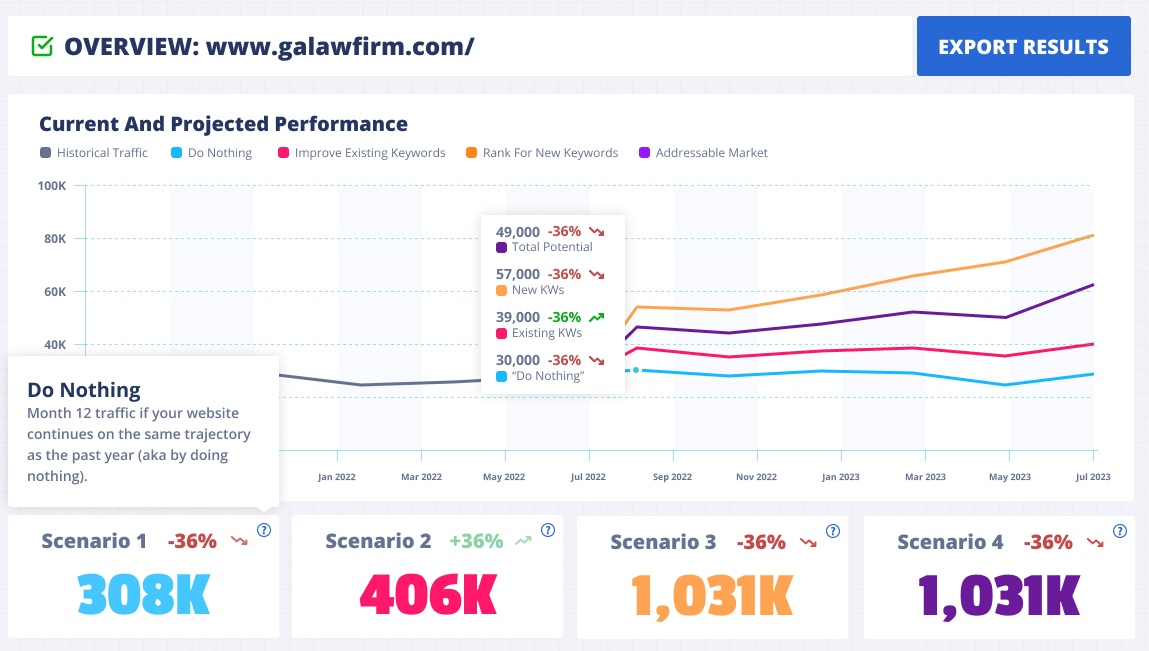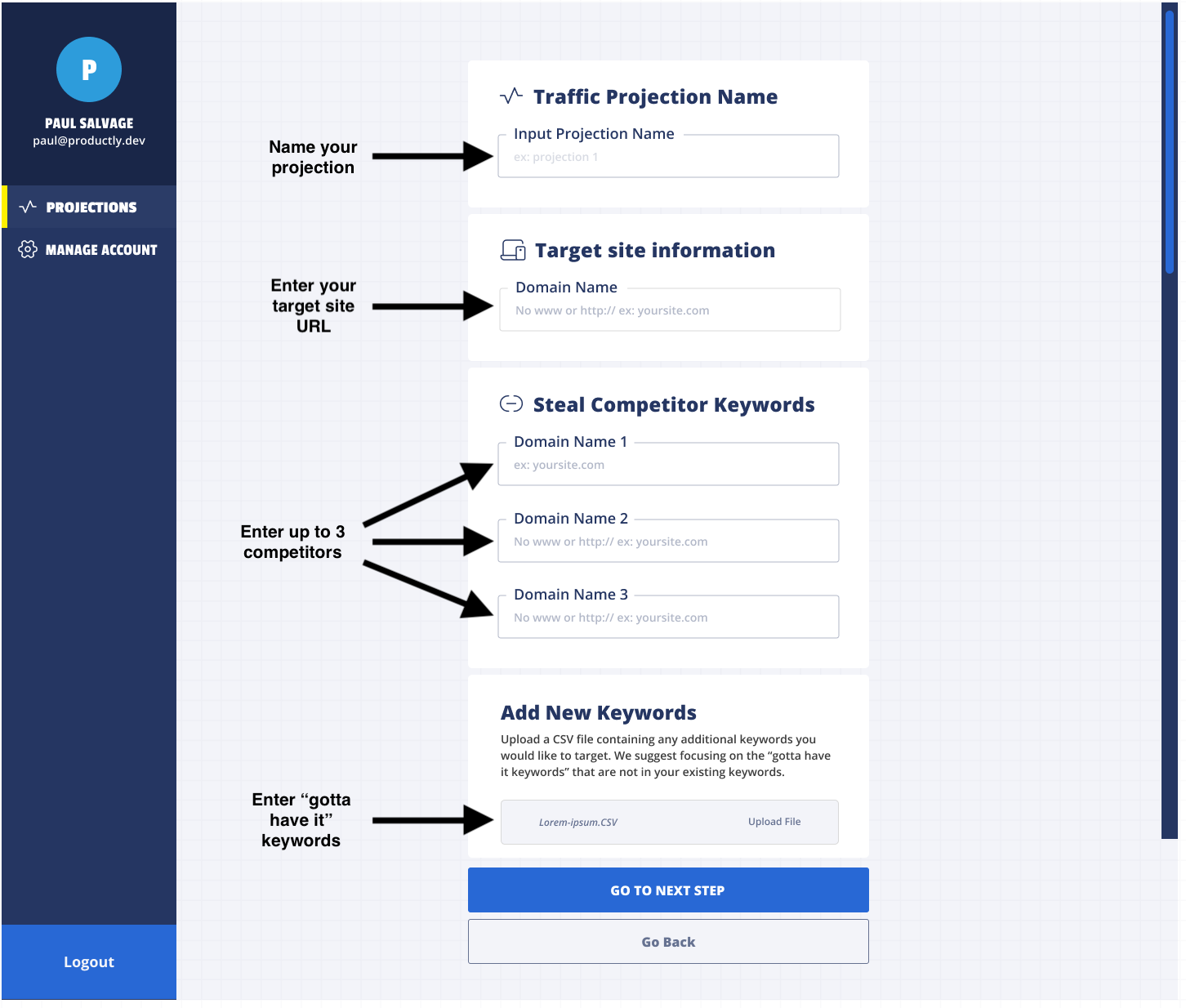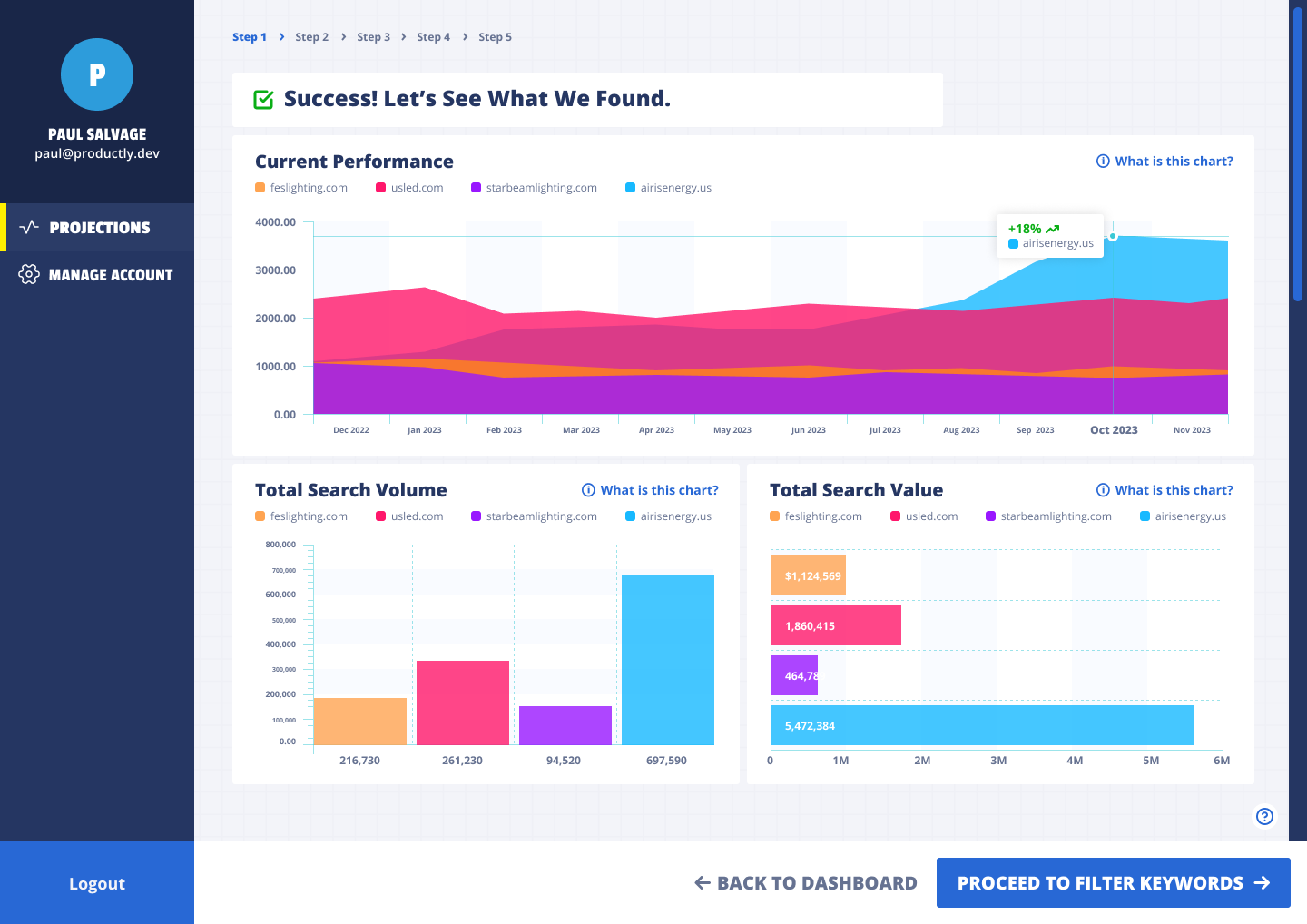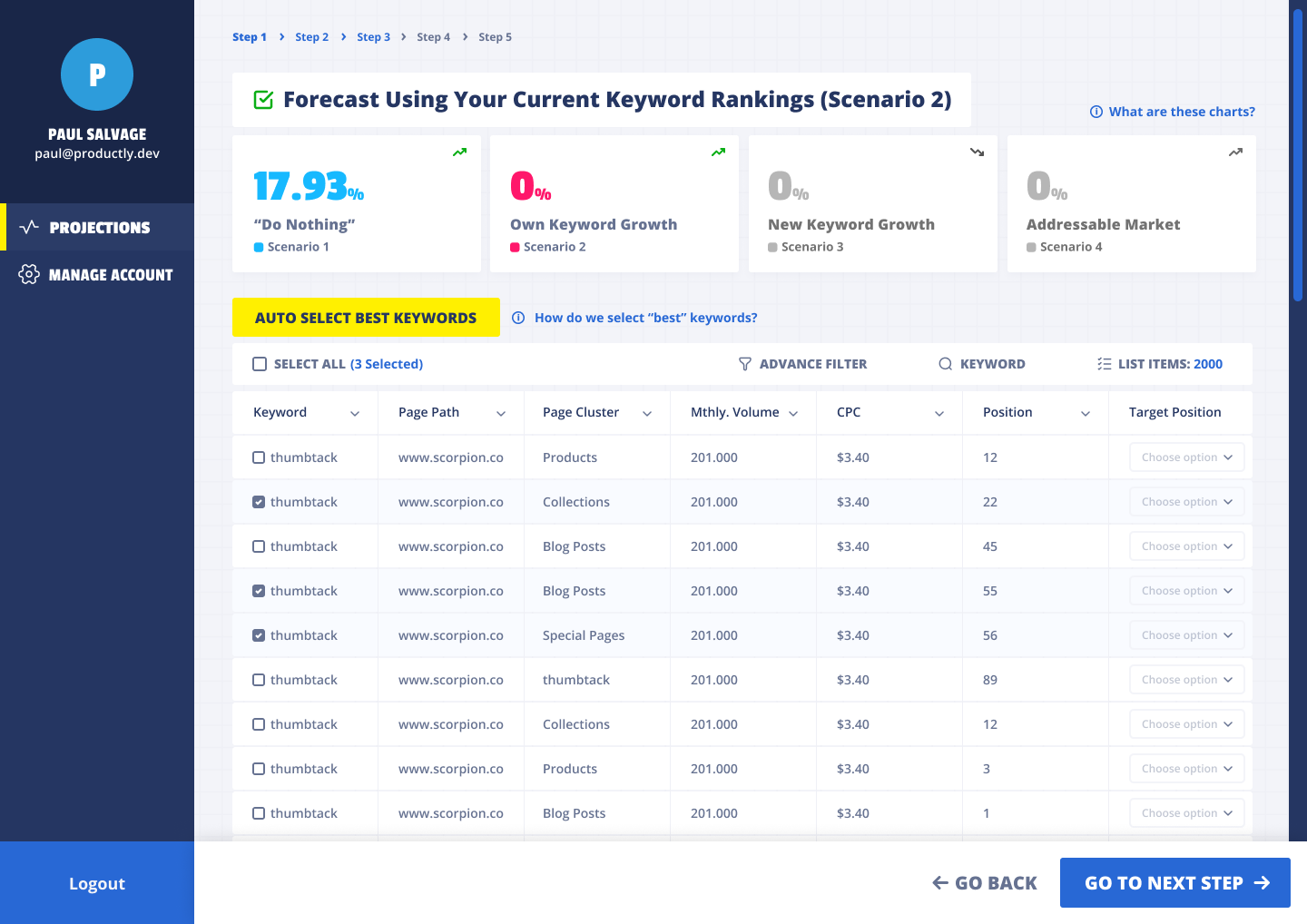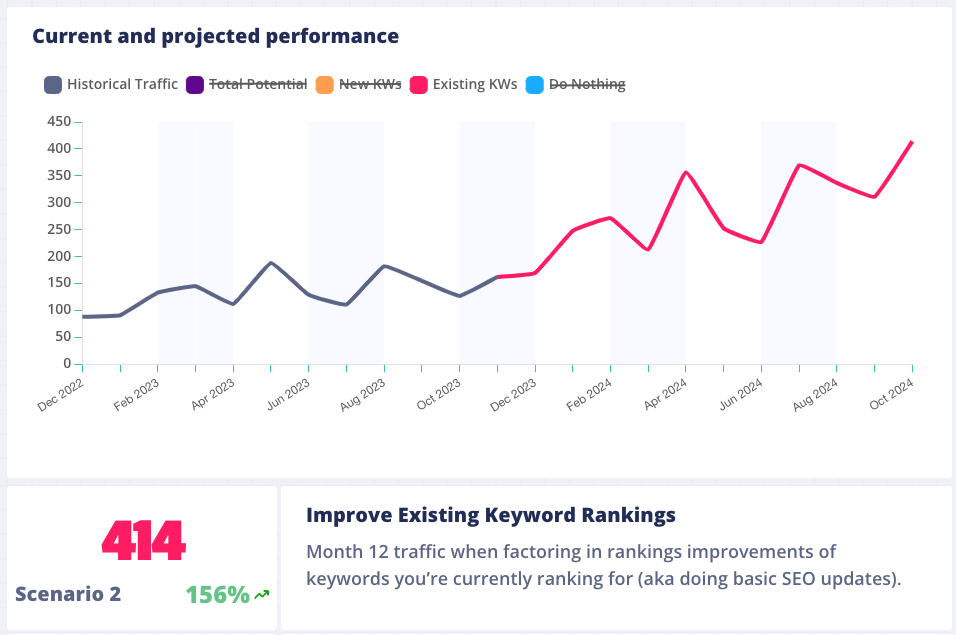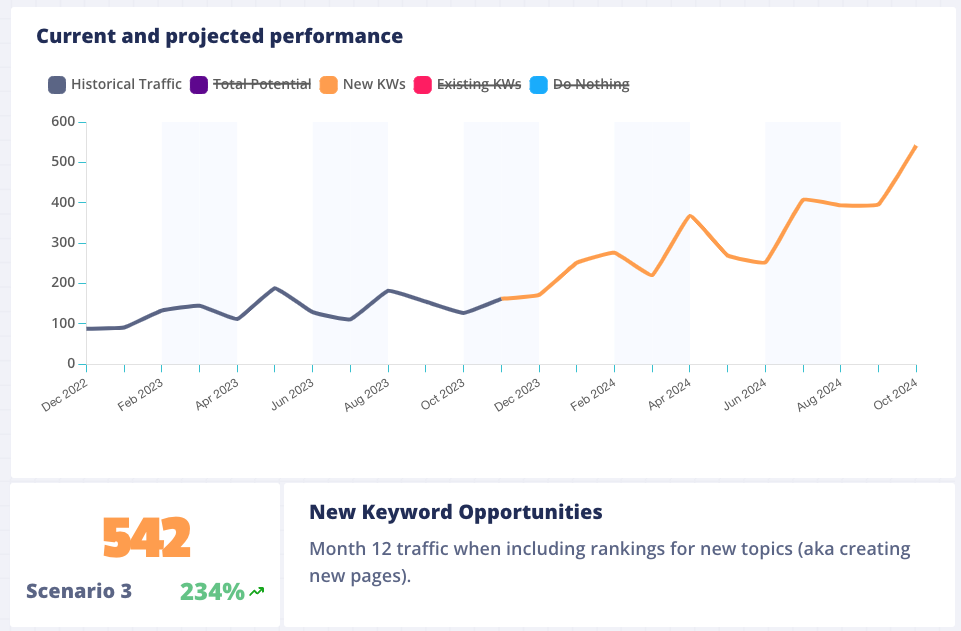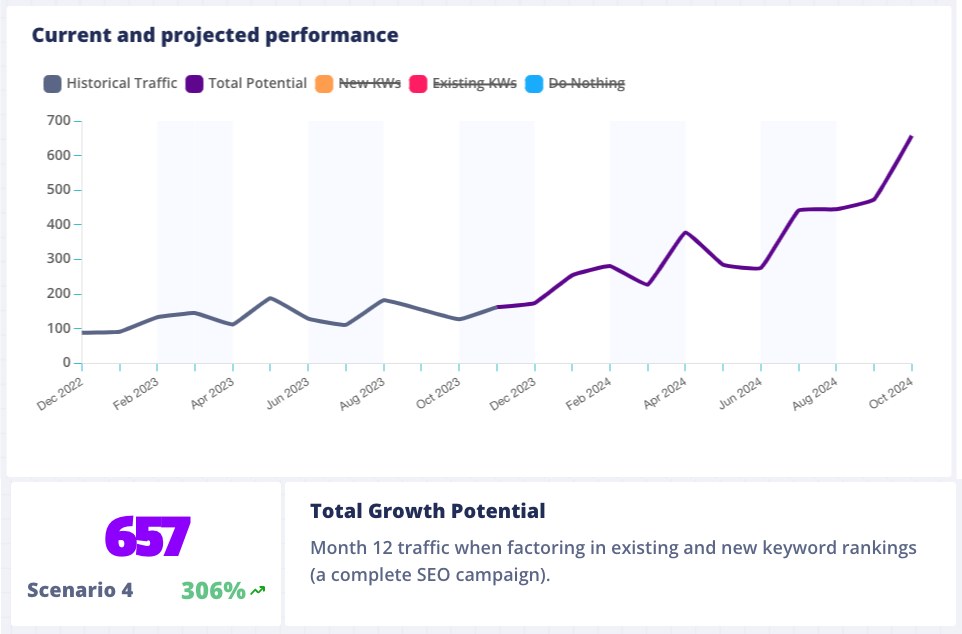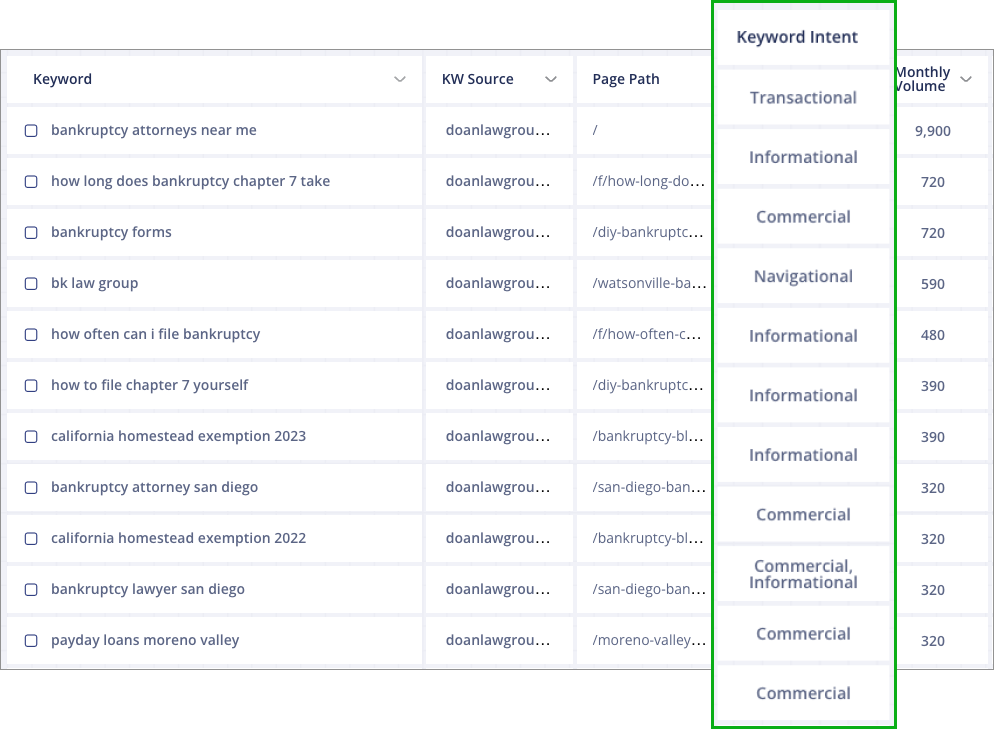Google’s organic algorithm is complex and unpredictable, making it difficult to accurately forecast SEO traffic.
However, it’s not impossible. Using data we can build estimates that are surprisingly accurate.
The Traffic Projection Tool can accurately predict the results of an SEO campaign by building a “keyword universe”database, then applying a series of growth models to the data.
This tool has become a pivotal part of our agency’s sales process, helping us demonstrate the impact of SEO before signing a contract.
Since integrating into our proposals, our agency’s close rate went from ~25% to ~50%.
This post will breakdown our SEO forecasting methodology and how you can leverage it to predict the results of your client’s campaigns.
Who should use this SEO forecasting method?
- SEO agencies, consultants and freelancers. The forecasts are a key pitch tool for our agency’s SEO proposals. It’s a great way to show how your services will impact their traffic and top line. It can also be used as a deliverable for new clients to baseline current traffic and create projections for future expected growth.
- Marketing teams. Looking at the viability of investing in SEO internally for your company and convincing executives for budget.
- SEO nerds (like us). Just for fun 😆
How can you use the traffic estimates?
We use The Traffic Projection Tool for a number of things:
1. To close more SEO proposals by “anchoring” our price against an expected result (aka ROI)
The tool provides a fast, accurate, and professional method to demonstrate to a prospect the potential increase in traffic and sales they can anticipate by partnering with you. For instance, you can effectively “anchor” your pricing against the expected future revenues. This strategy often results in higher retainer values and facilitates smoother deal closures.
2. As a client deliverable to show expected growth
If you run it during the sales process, it becomes an easy carry over into the actual campaign. We always add the charts from the tool in new client’s onboarding documents and strategy work. It allows us to be consistent with what we’re selling and what we’re delivering.
3. As a client deliverable for keyword research
Running this tool forces you to deep dive into the competition’s best performing keywords. There’s no sense in doing that work again when they’re a client, so we use exports from the tool to serve as a ‘seed’ keyword list.
4. As a better “offer” to convert more website visitors into leads
Every SEO agency is pushing a ‘strategy session’ or ‘free proposal’ as their main call to action. That offer is only good for traffic that’s already decided they want to hire your agency. The traffic projection tool offers 10x value by showing them the business impact of SEO, which is further amplified by expertly crafted content.
Our agency is currently running ads to the Traffic Projection tool offer and capturing booked sales appointments for less than $100…to COLD TRAFFIC.
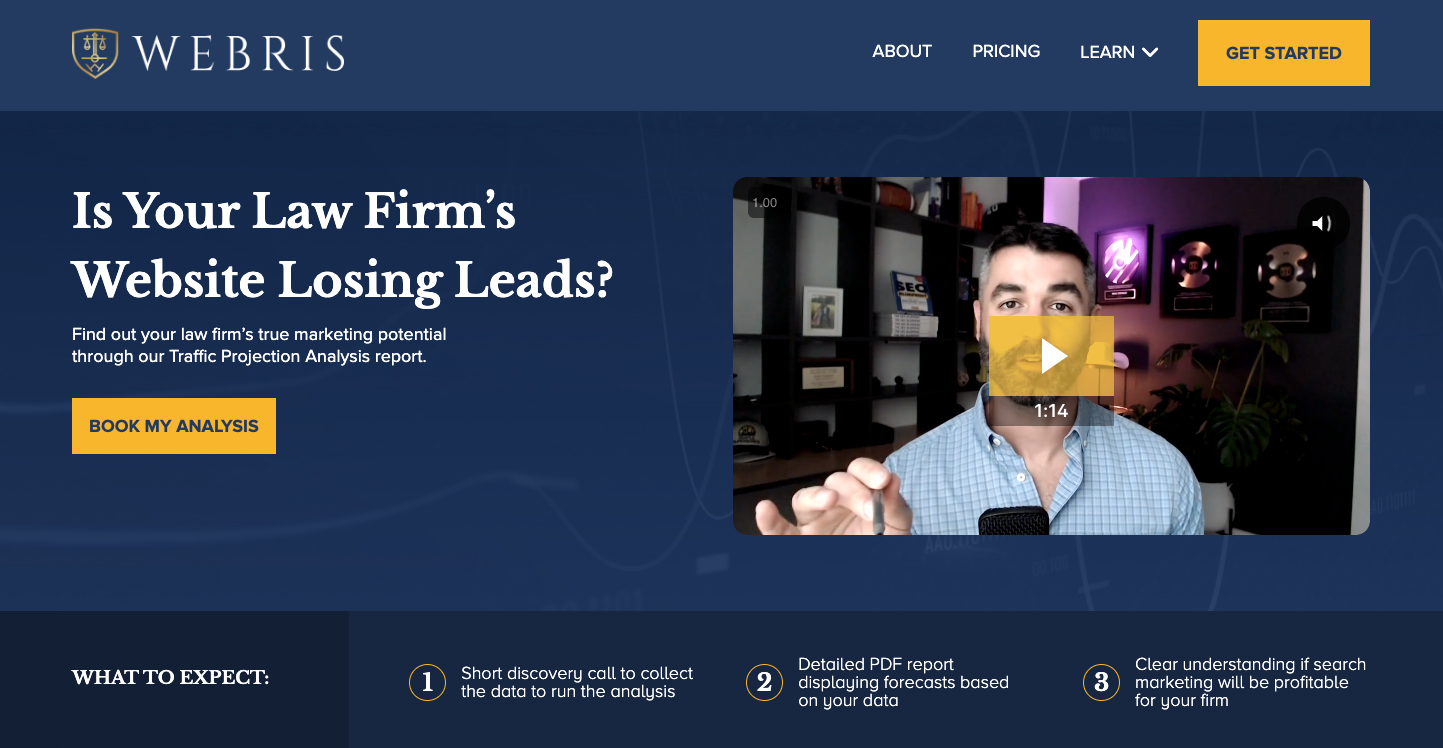
See how our agency uses the Traffic Projection Tool as a better offer for prospects (https://webris.org/traffic-projection-analysis/).
How we calculate organic traffic growth
In version 1.0 of the tool, we pulled in data from 2 sources:
- Google Analytics – to get 12 months of historical organic traffic data to understand your website’s current SEO performance.
- SEMrush – to get keyword data from your SEO competitors keyword rankings to understand the “gaps” with your website, and build future forecasts based on your organic potential.
Our initial thought was that using multiple data sources would make the forecasts more accurate. In reality, it caused a couple of issues:
- We only had access to 1 website’s data, not the competitors. So we were forced to make decisions about comparing keyword data from SEMrush vs traffic data from GA. It became an apples to oranges comparison.
- Using GA data requires access. When you’re using this as a sales tool, it slows down the process. Some prospects either don’t want to share that access or don’t know how to.
In reality, we were using Google Analytics to look at your website’s historical traffic. SEMrush has that capability as well, so we decided to focus on 1 data source, which has made the forecasts far more accurate.
We built a simple interface to input the domain you’d like to analyze, up to 3 competitors, a list of “must have” keywords and the SERPs location.
This is the first step in building a “keyword universe”, aka a database of keywords for you to build your forecasts.
Next, the tool lets you validate your keyword database:
Once validated, we begin the forecasting process.
This is where we believe our forecasts outpace the competition.
Our forecasts are so accurate because you’re in control. The tool doesn’t just randomly predict growth, you’re able to forecast growth at the keyword level.
That means every keyword in the database is given a forecast. Each keyword is analyzed for it’s current ranking, and where we project it’s ranking in 12 months.
This allows you to focus on important keywords, localized keywords, website sections, bottom funnel vs top funnel keywords, keywords that have no value…the list is endless.
We built in AI logic to apply target positions for you and speed up the process, but you’re still 100% in control.
Breaking down the organic forecasting models
After you’ve set the projections, the tools builds a series of charts to visualize the data, organized in a simple dashboard.
There’s 4 growth forecasts presented, each represents how much organic traffic you can expect in 12 months.
- If you do nothing
- If you improve your existing keywords only
- If you rank for new keywords
- Total addressable search market
Let’s break each of these down in more detail.
Scenario 1 – If you do nothing…
This figure represents your website’s current organic growth pace [yearly], with no changes to your SEO strategy. It’s calculated by pulling your past organic traffic performance and projecting it forward over the next 12 months.
This growth rate can be used to understand how your website will perform over the next year by doing nothing (in regards to SEO) and whether or not you need to invest in SEO.
Scenario 2 – If you improve existing keyword rankings…
Your monthly organic traffic if focused on improving rankings of keywords you’re currently ranking for. This is calculated by applying forecasting models to your existing rankings only. This figure is important because it’s focused on “low hanging fruit” improvement opportunities. We all know it’s much easier to impact growth when you improve what’s already there, as opposed to creating a ton of content targeting new keywords.
In addition to the chart, we provide a table that dives into the “Top Existing Keyword Targets”. This helps to unpack the chart by showing the actual keywords the projection is based on.
We like to use these as “seed keywords” after the prospect closes and becomes a client. We’re able to push these keywords to our delivery team as “low hanging fruit” that should be attacked immediately.
Scenario 3 – If you attack new keyword opportunities…
Your monthly organic traffic if you create new pages to attack new keyword opportunities. This is calculated by stealing competitor rankings and your list of “must have” keywords.
The Traffic Projection Tool will automatically filter out the keywords that your site is already ranking for, so there’s no issue with keyword duplications between Scenario 2 and 3.
This growth rate is built using keywords currently owned by your competitors (where you have no visibility). These keywords could potentially be captured by creating additional content for your website around these keyword gaps.
Our agency focused on working with law firms. We know what keywords these prospects should be ranking for before we even work with them. We feed that list of keywords into the Traffic Projection Tool and we’re able to show the prospect the exact keywords they should be ranking for and how much traffic they would drive.
Scenario 4 – Total growth potential
Your monthly organic traffic when you combine scenarios 2 and 3 into a single forecast. This can be viewed as a “total addressable market” figure to understand what your organic potential is. This growth rate can be used to understand the FULL potential for your website’s growth.
SEO forecasting using keyword intent
Not all keywords are created equal – forecasting using keyword “intent” allows you to build a projection that doesn’t just look at traffic, but impact on conversions as well.
The Traffic Projection Tool automatically tags each keyword in your forecast based on 4 levels of intent:
- Navigational Keyword Intent: For searchers intending to visit a specific site or page.
- Informational Keyword Intent: For searchers seeking information or answers to questions.
- Commercial Keyword Intent: For searchers looking for product or service options before making a decision.
- Transactional Keyword Intent: For searchers ready to purchase or perform an action.
This level of forecasting enables you to hyper-focus on keywords that are most likely to drive meaningful business impacts, ensuring that their strategies are both targeted and effective.
Next steps
Ready to build your own organic traffic projections? Click here to get started.
